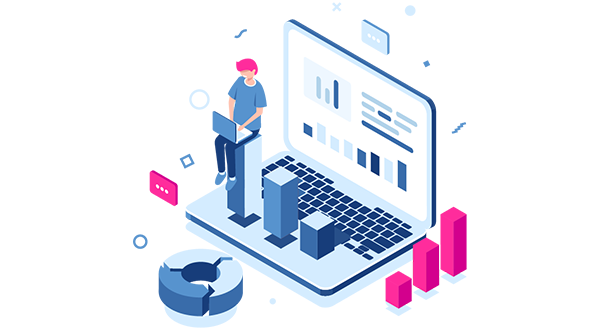

mLogica Thought Leaders: The Challenges of IT Modernization in the Public Sector

Dale Vecchio, mLogica Group V.P. of Marketing and Strategy
Besides the military, government organizations have been some of the longest users of computer technology over the last sixty years. As the U.S. population continued to grow, government structures kept pace. New agencies were introduced and this ever-increasing demand for public sector services compounded the entrenchment of many legacy technologies throughout the public sector IT landscape. The biggest roadblocks these organizations face in modernizing that long-term IT infrastructure include:
- Budgetary challenges
- Resistance to change within the legacy workforce
- Risk avoidance by key decision makers
While it has become increasingly convenient to blame the woes of many industry segments or government agencies on the recent Covid-19 pandemic, it’s also not entirely wrong. It’s not just the terrible nature of the pandemic itself and its impact on human life, but rather an indication of how fragile our existing economic structures and legacy IT systems really are!
It’s easy to avoid this pending risk when these systems work under normal conditions, but as the pandemic showed us, any forces out of the ordinary wreak havoc on legacy systems that were built for a very different time. This “different time” is reflected in these legacy technologies, IT architectures, and most importantly, the different expectations of the constituents of government agencies.
These systems were built BY baby boomers FOR baby boomers, and their place in the world is changing as they inevitably age, bringing with that change different demands and needs from the public sector. In addition, the aging of Gen X, Gen Y and millennials to a point in their lives where they are working, starting families and reflecting very different social beliefs than their parents or grandparents can’t simply be ignored as the soon-to-pass whims of upstarts.
These generations ARE the future, not baby boomers! And what they need and expect from the public sector are different. Much like no one of these generations is likely to ever set foot in a branch of a bank, they demand the same “self-service” mindset from government agencies that the internet has provided them in all other aspects of their life!
Public sector agencies need strong leadership that can overcome the resistance to change and risk avoidance mindset of the past. Waiting to resolve these problems won’t make them go away. They won’t solve themselves—and passing them on to the workforce that replaces you when you retire shows a lack of real courage. There is no doubt that the single biggest attribute that any government agency’s leadership needs is COURAGE!
Courage can overcome the easy-to-accept risk avoidance mindset of many IT leaders. “It’s here, it works and I’m not risking my career trying to fix it,” is an all-too-common approach of the last 20 years. “Our workforce has built habits around the IT systems we built decades ago, and they don’t want to change,” is another common rationalization for maintaining the status quo.
If a government organization’s leadership wants to show their younger, and more importantly VOTING, constituents that they care, then government services need to reflect their needs. Eliminating the bureaucracy of legacy government agencies through increased self-service, internet-accessible services is an important rallying cry for modernization.
Of course, any of these new capabilities need to be built on highly secure and reliable infrastructures, but modern organizations like Amazon, eBay, Netflix and Google have shown it IS technologically possible. While government agencies may not have the financial or technical wherewithal of these organizations, the technologies these forward-thinking companies have built are becoming more readily available and easier to use.
No government organization could EVER build the sophisticated computing capacity environment of the major cloud providers, such as AWS, Microsoft or Google—and certainly not all government systems may be appropriate for the cloud. But any public sector service that needs the innovation of open source, artificial intelligence/machine learning or complex data analytics will have many more options available to them through modernization than can come from their extant legacy platforms and vendors.
Public sector leaders need to go where the innovation is! And that’s NOT on the backs of vendors and technologies developed decades ago. Current investment trends in IT are focused on the cloud, AI and analytics. Learn to leverage those technologies while having the courage to overcome the challenges of IT modernization!
For more information on how you can modernize your distributed and mainframe workloads to the cloud in one-third the time and at half the cost of traditional migrations, contact us at Modernize-Now@mLogica.com.








































